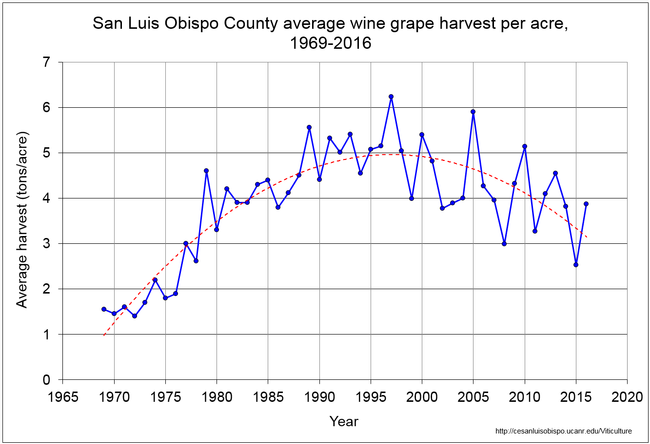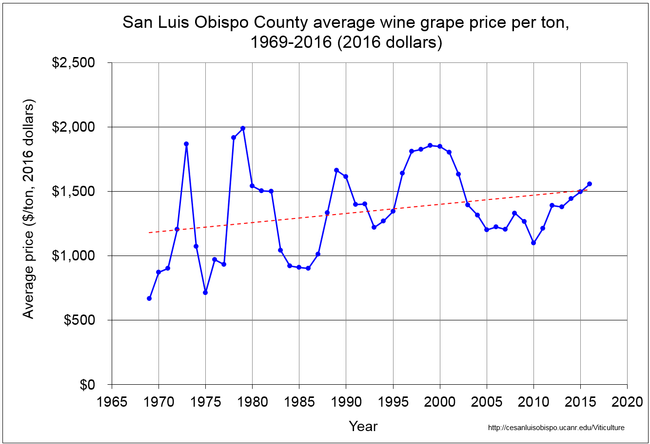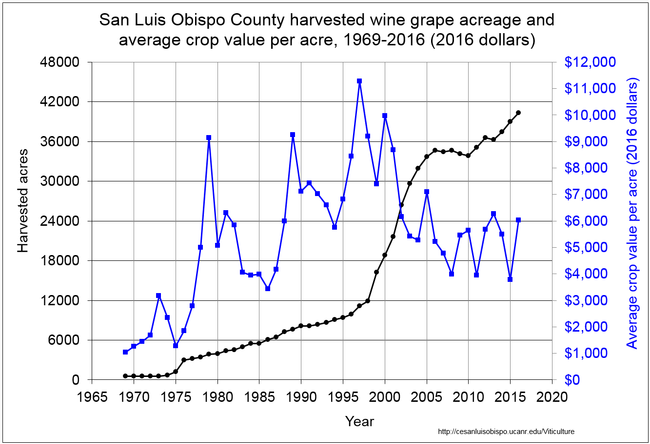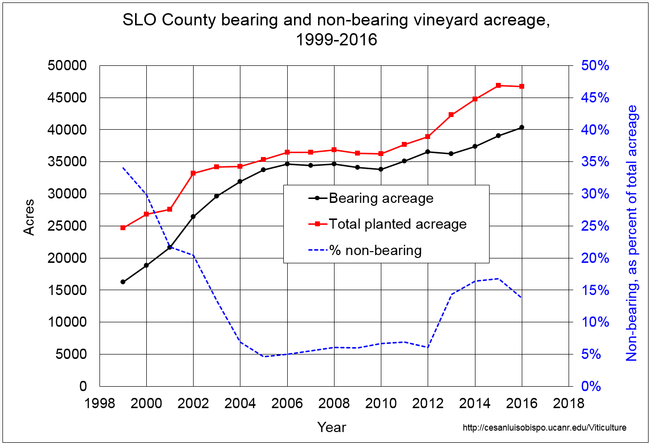A previous blog article posted in 2015 gave a historical perspective on the production and economic trends for SLO County vineyards from 1969 through 2014. This current posting updates these same trends with 2015 and 2016 data from the SLO County Ag Commissioner's office.
The total wine grape crop value for 2016 reached an all-time high for the County, at nearly $243 million, over $97 million greater than the very low 2015 harvest. The harvested acreage has continued to grow and in 2016 reached an all-time high of 40,307 acres.
The production per acre was very low in 2015 and moderate in 2016, thus continuing the longer-term trend of lower tonnage per acre that has been occurring since the late 1990s (Fig. 1).
The average price per ton has gradually increased over the past several years, and the nearly five-decade trend in the inflation-adjusted price per ton shows a steady increase over time (Fig. 2).
Combining the above ton per acre and price per ton data together as the crop value per acre, and adjusting this value for inflation over time provides a useful statistic for growers who are keenly aware of their farming costs per acre. Comparing this value with the total harvested acreage over time shows how the rapid increase in harvested acreage beginning in the late 1990s was then accompanied by a strong drop in the crop value per acre (Fig. 3). The last two seasons have seen a continuation of the trend previously outlined in the 2015 article; the crop value per acre continues to remain at far lower levels than two decades earlier, while the harvested acreage has continued to increase.



